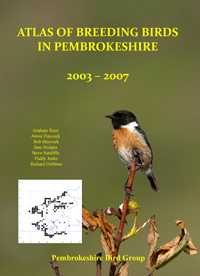Grey Phalarope - 1994
 Friday, December 16, 2011 at 3:04PM
Friday, December 16, 2011 at 3:04PM Passage migrant. Not recorded from April to July
"For many years hardly an autumn has passed without this pretty species being detected on our coasts" wrote Mathew (1894), who also noted that Grey Phalaropes were numerous at Tenby in the autumn of 1893 and that gales sometimes blew them inland. Lockley et al. (1949) added just six further records of single birds at Loveston, Narberth, Haverfordwest and Pembroke.
Grey Phalaropes have been recorded in 25 of the 43 years since and in every year since 1981 as more observers have been active. Nearly 90% of the records fall in the period 2 August to 29 November, half of them in September. Most sightings are of up to five birds at localities ranging from coastal pools and estuaries to headlands and islands. They have also been seen from passing shipping. Up to 17 phalaropes were seen off Skokholm and 227 off the Smalls between 18 and 29 September 1960, all those seen closely enough proving to be Greys, during a period when there was a large incursion into the Western Approaches (Ferguson-Lees and Williamson 1960).
 1994 BoP in
1994 BoP in  Grey Phalarope
Grey Phalarope 
